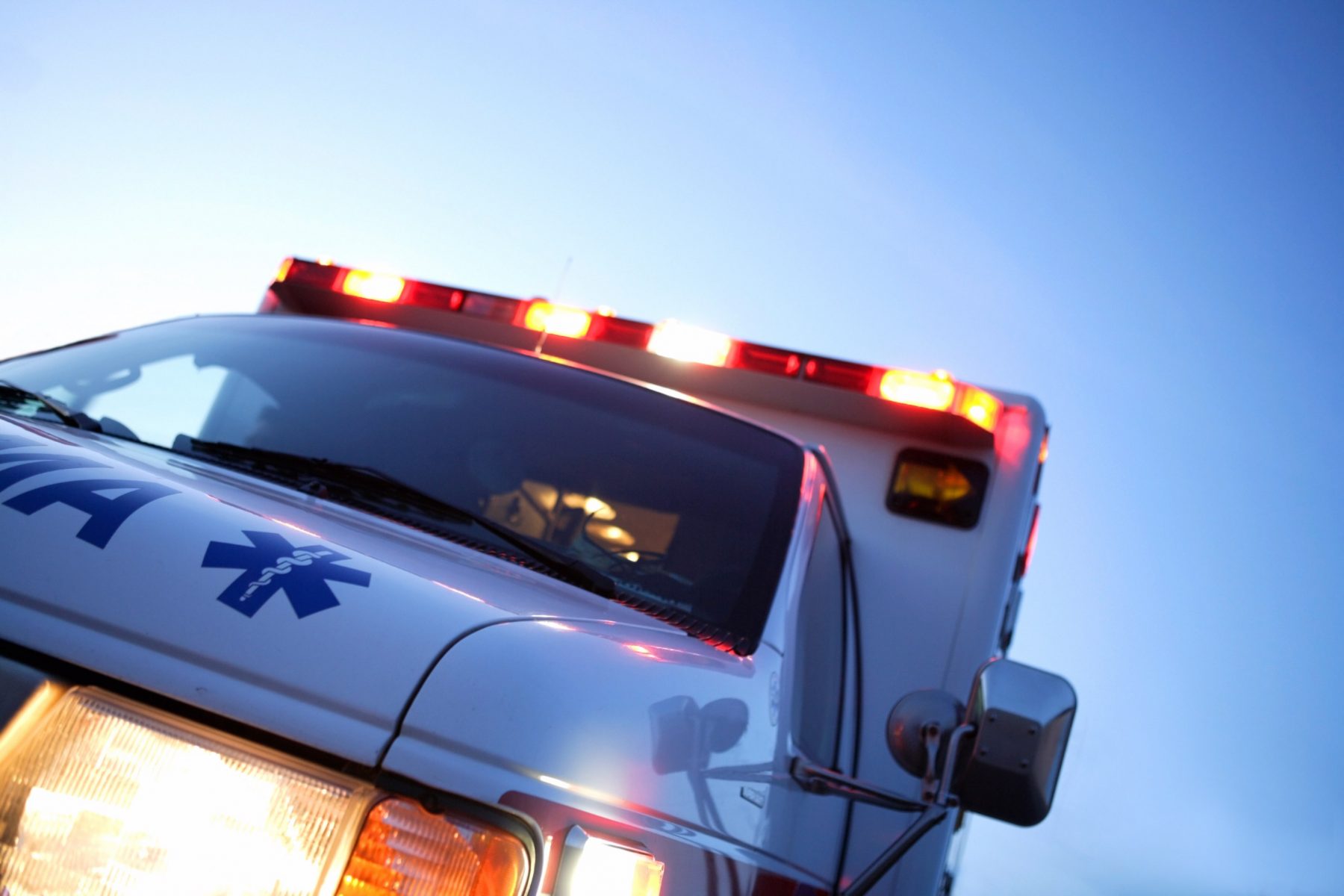A vehicle accident can happen anywhere at any time. When it comes to car accidents, the only thing you truly have power over is what happens next (unless, of course, you’re dead or unconscious).
Almost all vehicle accidents result in injuries, whether major or minor. A common factor in all wounds is that they require treatment, and what better place to seek treatment than a hospital, a building full of professionals ready to tend to your injuries. The choice to go to the hospital and how you get there is entirely up to you.
Most medical experts say that the best way to get to a hospital is by ambulance. Here are some pros and cons of riding in an ambulance after a car accident:
Pros of Riding in an Ambulance
Pro: Ambulances come with paramedics
All ambulance services provide paramedics, trained to operate in any environment without the backup and support like in a hospital.
Paramedics provide first aid which is an appropriate treatment to patients on-site, meaning you don’t have to get to the hospital first for your treatment to begin.
The paramedics bandage up all open wounds, thus reducing the risk of infection and administer pain relievers to stop the pain and agony brought about by injuries.
There is also that calm and feeling of relief of knowing that someone who knows what they are doing is looking after you.
Paramedics give you advice on whether to go to the hospital or just go home, depending on their assessment of your injuries.
Pro: Ambulances get you to the hospital faster.
Things you’ll never miss on any ambulance are the flashing lights and a siren. These are to alert other road users that it is an emergency vehicle, and they should give way.
Others giving way eliminates the need to wait in traffic jams or go slowly just because the driver of the car in front is not in a hurry. Also, ambulance drivers are trained to maneuver traffic at high speeds.
Getting to the hospital, faster means you get treated quicker, and if your injuries are fatal, it increases your chances of being saved.
Pro: It is safer than driving yourself
Let’s say you sustain head injuries or internal bleeding in the accident. Driving yourself to the hospital puts you and other motorists, as well as pedestrians, at high risk. You could pass out at any moment and end up hitting something or someone.
Besides, driving yourself while bleeding and in pain is a painful experience, and there’s no need to put yourself through that.
Pro: Your injuries could be much worse than they seem
It is not easy to determine the existence and severity of certain injuries, like head injuries and internal bleeding.
What might seem like a slight bump on the head could be a concussion or worse, brain damage. Internal bleeding is by far the hardest thing to notice after an accident because it might appear as bruising or pain that could easily be dismissed as a minor injury sustained when something hit you.
During an accident or a frightening experience, your body releases the hormone adrenaline. Most people associate adrenaline to a higher heart rate and increased strength, but what few people know that it also causes a numbing effect.
This numbing effect might leave you oblivious to specific injuries you’ve sustained, and you might decide to go home only for the injuries and their implications to get worse when you’re all by yourself.
The first thing that the ambulance personnel does is checking all your injuries and determine how bad they are; hence the possibility of injury going unnoticed is significantly reduced.
Pro: It helps solidify your insurance claim
After an accident, especially one that you were hit by another vehicle, not your own, and with no witnesses, it is tough for you to prove that you were involved in a car accident.
Insurance companies might try to disprove or down value your claim. Calling an ambulance to the scene ensures you have the relevant documents to prove that you were hurt in that particular car accident.
The documents obtained from the medical report filed by the ambulance personnel and at the hospital are vital in:
• establishing that you suffered the injuries
• proving that the injuries sustained are related to the accident
• providing a detailed report on the extent of your injuries and damages incurred
Pro: Arriving in an ambulance may give you priority treatment at the hospital
Arriving in a hospital in an ambulance implies serious injuries; hence medical personnel rushes to access your injuries immediately.
Simply walking into an emergency room won’t get you as much attention as being wheeled in a wheelchair or stretcher. The underlying assumption here is that someone who is well enough to get to a hospital by themselves is not as hurt as another who requires being brought.
The medical personnel in the hospital are also notified of your health status before you arrive hence makes treatment a bit faster. Patients who arrive in ambulances are also placed in different waiting rooms because they arrive at a different side of the hospital than other patients.
There are always medical personnel in the waiting rooms to monitor the condition of patients as they wait to see a doctor.
Pro: The ambulance personnel know the best hospital to go to
Different hospitals provide better services for various issues. The ambulance medical personnel know all hospitals in their area of operation and the services they provide. Still, even if you do know some hospitals, they are more knowledgeable because they do it multiple times daily.
Cons of Riding in an Ambulance
Now that you’ve seen the advantages of taking an ambulance after a vehicle accident, let us look at some of the disadvantages.
Con: Ambulance services are expensive.
In this world, the only free thing is the air you breathe; even being alive costs you money. Ambulance services, although trying to help, are no different from any business, and the purpose of doing business is to get paid.
There are two main types of ambulance services
• state-owned
• private ambulance service companies
State-owned ambulance services are relatively cheaper than privately owned ambulance services. State-owned ambulances respond to any accident site and are usually called by the police, whereas privately owned services are requested by those who’ve already taken covers for the service.
Both have a common denominator. You have to pay.
For critical emergencies that require specialized treatment that is not available near the accident scene, air ambulances are required. To be transported by an air ambulance, you’d have to part with a lot more money than you’d have to pay for a regular ambulance. If you think that regular road ambulance services are expensive, then prices in air ambulance services will blow your mind.
Con: They depend on traffic conditions
Although all motorists are obligated to pave the way for ambulances, certain traffic conditions like bumper to bumper traffic jams are no exemptions, even to an emergency vehicle.
The time an ambulance takes to get to you, and take you to the hospital all depends on the nature of the road and the traffic conditions on it.
Even if you were to opt for air ambulance services that are not hindered by traffic, you’d still have to worry about weather conditions.
Con: Acceleration and noise
The occupants of an ambulance, like any other vehicle, are subjected to being pushed back and forth when the ambulance speeds up or stops.
More than most vehicles, except supercars and motorcycles, ambulances are noisy as a result of the siren and the sound of the engine itself.
Now imagine being subjected to all these involuntary movements and noise while in pain, kind of adds to the agony, doesn’t it?
Con: Medical services may be difficult to provide during transport
It may be difficult for paramedics to perform first aid and administer medication-especially injections when the road is bumpy.
This delays treatment and increases the amount of time you spend bleeding or in pain. Also, an ambulance has limited space hence cannot accommodate all necessary medical equipment to treat you.
Con: There is limited space in the ambulance
Although most countries use custom made vehicles as ambulances with relatively larger cabin space than your average van, space still isn’t enough to accommodate all necessary medical staff and medical equipment required for treatment. Inadequate space applies to both regular and air ambulance services.
Con: Speedy driving may result in other accidents
To get a patient to the hospital fast, especially if in critical condition, ambulance drivers often need to drive fast and break a few traffic rules. This sort of ‘reckless’ driving may result in other accidents that may lead to worsening of the patient’s injuries or, worse, death. They also pose a risk to other road users who might fall victim to such accidents, not to mention the ambulance personnel themselves.
Con: Inadequate medical equipment onboard
Due to limited space in ambulances, it is impossible to fit all necessary medical equipment and staff required for treatment.
So, when SHOULD you take an ambulance after a car accident?
- When experiencing life-threatening symptoms
- When you are unable to get yourself to the hospital
- After any serious accident
- When there is heavy traffic
- When insurance is involved
Reason 1: When experiencing life-threatening symptoms
Experiencing symptoms such as bleeding, lightheadedness, difficulty in breathing, and disorientation requires the use of an ambulance. With these symptoms, you are not in a condition to get yourself to the hospital.
Also, It might just save your life because the ambulance personnel closely monitor your status and alert the hospital before your arrival so that it can prepare adequately to serve you.
Reason 2: When you simply cannot get yourself there
Sometimes, your injuries are very severe that you simply cannot move or drive safely. At this point, the only logical option is to take an ambulance because even if you were to tell someone to drive you there, you wouldn’t have the necessary medication and medical equipment to perform first aid or administer treatment on your way to the hospital.
Reason 3: After any serious accident
The severity of most injuries cannot be determined by only looking at them. Most of the time, we require an expert opinion and tests-both of which are provided by ambulance personnel.
It is also better to be cautious than sorry. It is better to take an ambulance then realize that you did not need it at all than to not take it then regret later.
Reason 4: When there is heavy traffic on the road
The presence of dense traffic means you get to hospital slower. Ambulances are not obligated to follow all traffic rules, and other motorists pave the way for them. Also, if you require immediate medical treatment on your way to the hospital, the paramedics will provide it. They will also alert the hospital on your condition so that the staff there can prepare adequately for your arrival if the injuries sustained are serious.
Reason 5: When the nature of your accident is liable to insurance coverage
When you take an ambulance to the hospital after an accident, it increases the possibility of getting your full personal injury claim. It limits the arguments the insurance company might have to discredit your application as you have documents to prove it.
Taking an ambulance also reflects on the nature of your injuries as an insurance company may try to argue you were not seriously hurt, thereby reducing your settlement. The ambulance personnel will produce documents to support your claim.
Taking an ambulance after an accident, be it a car accident or any other accident, is entirely your choice. Before making any decisions, it is necessary to consider the advantages and disadvantages of your course of action. In this case, the benefits of taking an ambulance outweigh not taking an ambulance.

